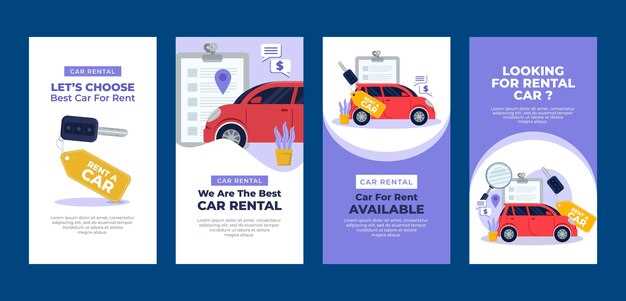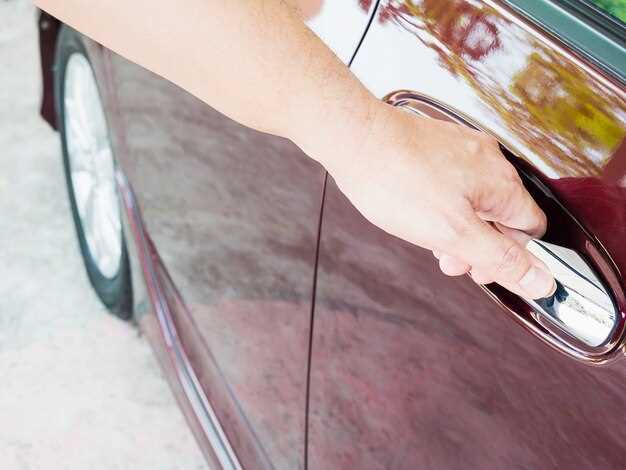Replace worn-out parts instead of overhauling the entire system. Focus on identifying and addressing specific issues that affect performance. For instance, checking brake pads, air filters, and spark plugs can lead to immediate improvements without breaking the bank.
Consider a DIY approach for minor repairs. Simple tasks like changing oil, replacing bulbs, or fixing small dents can be tackled with basic tools and online tutorials. This not only saves money on labor costs but also gives you a sense of accomplishment.
Shop for used or aftermarket parts. Many reputable suppliers offer quality components at reduced prices. Websites like eBay or local salvage yards can provide great deals that fit your budget while ensuring your car runs smoothly.
Prioritize regular maintenance to prevent larger issues later. Routine oil changes, tire rotations, and fluid checks keep your vehicle in good condition and can avoid costly repairs down the line. Set reminders or create a maintenance schedule to stay on track.
Join online forums or local car clubs for advice and support. Engaging with fellow car enthusiasts can provide insights into affordable restoration techniques and resources specific to your vehicle model.
Assessing Your Car’s Condition Before Starting Repairs
Inspect your car thoroughly to identify existing issues. Check for visible signs of damage, such as dents or scratches on the body. Look under the hood for oil leaks, corrosion, or worn belts. A clean engine area allows easier identification of potential problems.
Examine the tires for uneven wear and proper inflation. Low tread depth might indicate alignment issues or suspension problems. Inspect the brakes for wear indicators, and listen for unusual sounds during braking. A dependable braking system is critical for safety.
Check the fluid levels: oil, coolant, brake fluid, and transmission fluid. Low levels may signal leaks or maintenance needs. Inspect the condition of the fluids; dirty oil or coolant can indicate more extensive engine problems that require attention.
Take the car for a test drive in various conditions. Pay attention to how it accelerates, brakes, and handles turns. Any unusual noises or vibrations during the drive should be noted as potential areas requiring repair.
Utilize an OBD-II scanner to check for error codes in the vehicle’s computer. This can provide insights into underlying issues that may not be immediately visible. Addressing these codes early can save on costly repairs later.
After your assessments, make a list of necessary repairs prioritized by urgency and budget. This helps you allocate resources effectively and avoid overlooking critical issues.
Finding Affordable Parts and Supplies Online
Utilize websites like eBay Motors and RockAuto, which offer a vast selection of new and used parts at competitive prices. Filter your search by condition and price range to find the best deals quickly. Check the seller’s ratings and reviews to ensure reliability before making a purchase.
Joining online forums or communities focused on your car model can also be an excellent strategy. Members often share resources, recommend reliable suppliers, and may even sell parts at discounted prices. Facebook groups related to automotive repairs can be particularly useful for connecting with other enthusiasts.
Consider using comparison shopping websites that aggregate prices from multiple retailers. Tools like Partsy or CarParts.com can help you identify the best prices without spending too much time browsing various sites.
Don’t overlook local classifieds and marketplaces like Craigslist or Facebook Marketplace. Sometimes, individuals sell parts they no longer need at significantly lower prices than shops or larger online retailers. Just ensure that you verify the part’s compatibility with your vehicle before completing the transaction.
Subscribe to newsletters from auto parts retailers. They often send promotions, discounts, or coupon codes directly to your inbox, allowing you to save on your purchases. This is an easy way to stay informed about seasonal sales and clearance events.
Look for refurbished or reconditioned parts, which can be significantly cheaper than buying new. Sites like Car-Part.com specialize in recycled auto parts, providing a cost-effective option while still ensuring quality.
Before finalizing your purchase, compare shipping costs. Some sellers may offer lower prices on parts but charge high shipping fees, negating your savings. Look for sellers with free or flat-rate shipping options to maximize your budget.
DIY Repair Techniques for Common Issues
Fix minor dings and scratches using touch-up paint. Clean the area first with soapy water, then dry it thoroughly. Shake the touch-up paint and apply it carefully using a fine brush or a toothpick for precision. Ensure to apply multiple thin layers, allowing each to dry before the next.
Address a dead battery effortlessly. Jump-start your car with jumper cables connected to a working vehicle. Ensure the cables are connected correctly: positive to positive and negative to negative. Once started, let the engine run for at least 30 minutes to recharge the battery.
Fix a flat tire easily. Locate the spare tire, jack, and lug wrench in your car. Loosen the lug nuts slightly before raising the vehicle. Once elevated, remove the flat, replace it with the spare, and tighten the nuts securely while the wheel is still off the ground.
Resolve overheating issues by checking the coolant levels. If low, add the appropriate coolant mixture when the engine is cool. Inspect for leaks around hoses and the radiator. Tighten any loose clamps or replace damaged hoses as needed.
Repair worn wiper blades quickly. Buy replacement blades that fit your vehicle model. Lift the wiper arm and press the release tab to detach the old blades. Snap the new blades into place firmly and lower the wipers back onto the windshield.
Tackle interior stains with a simple mixture of water and mild soap. Use a soft cloth or sponge to apply the solution. Gently scrub the stained area, then rinse with clean water and blot dry to avoid water spots.
Resolve squeaky brakes by inspecting brake pads. If they appear worn, replace them following the car’s manual instructions. It’s vital to clean the brake calipers and ensure everything is lubricated properly during the process.
Routine Maintenance Tips:
- Check tire pressure regularly; under-inflated tires reduce fuel efficiency.
- Monitor oil levels and change the oil every 3,000 to 5,000 miles to keep the engine running smoothly.
- Replace air filters every 12,000 miles to promote better airflow and engine performance.
Implementing these DIY techniques can save you money and extend the life of your vehicle. Each small repair contributes to overall performance, making your car more reliable.
Utilizing Community Resources for Assistance
Join local automotive clubs or forums where members share knowledge and resources. Accessing this network can provide valuable advice and potential assistance with your car restoration.
Check out community colleges and vocational schools that often offer classes in automotive repair. Many programs allow students to work on real vehicles under supervision, offering you a chance for affordable repairs.
Visit local charities or non-profit organizations dedicated to helping those in need with transportation issues. They might have programs or resources to assist you in getting your vehicle back on track.
Take advantage of free workshops offered at auto parts stores. These often cover basic repairs and maintenance, equipping you with skills to handle minor issues yourself.
Participate in local car shows or meet-ups. Networking with fellow enthusiasts can lead to discovering hidden gems of knowledge or even spare parts, so stay engaged with your community.
Explore social media groups focused on automotive restoration. These platforms allow you to ask questions, share your progress, and get recommendations for local services.
Utilize public libraries for access to repair manuals and guides. Many libraries offer free memberships that unlock a wealth of information, from troubleshooting to detailed repair steps.
- Attend local meetups for hands-on experience.
- Follow local auto enthusiasts on social media for tips.
- Visit your town’s community board for upcoming repair clinics.
Most importantly, don’t hesitate to ask for help. Many community members are willing to lend a hand or share tools, often leading to new friendships and shared experiences along the way.
Learning to Maintain Your Car to Prevent Future Issues
Change your oil regularly, following manufacturer guidelines–this keeps your engine running smoothly. Check the oil level monthly and look for any leaks. Use the dipstick to assess the oil’s color and texture; dark, gritty oil signals the need for a change.
Inspect your tires frequently. Look for proper inflation and tread depth. Use a tire pressure gauge to ensure optimal pressure, and rotate tires every 5,000 to 8,000 miles to promote even wear. Uneven tread can lead to poor traction and premature tire failure.
Pay attention to your brakes. Squeaking or grinding noises indicate wear. Replace brake pads when they are worn down to 3mm. Keep an eye on brake fluid levels; low levels could signal a leak or worn pads. This proactive approach saves money on extensive repairs later.
Cleansing your car’s exterior and interior can prevent rust and corrosion. Wash the car at least once a month, and wax it every few months for added protection. Vacuuming and treating the interior prevents wear on upholstery and extends the life of your cabin materials.
Monitor fluid levels regularly. Check coolant, brake, transmission, and power steering fluids. Low levels can lead to overheating or mechanical failures. Topping these off promptly helps maintain optimal performance and prevents costly repairs.
Here’s a handy maintenance schedule:
| Service | Frequency |
|---|---|
| Oil Change | Every 5,000 miles |
| Tire Rotation | Every 5,000 to 8,000 miles |
| Brake Inspection | Every 10,000 miles |
| Fluid Check | Monthly |
| Exterior Wash | Monthly |
| Wax | Every 3 months |
Keep your air filter clean. Replace it every 12,000 to 15,000 miles to enhance fuel economy and engine performance. A clogged filter restricts airflow, leading to inefficiency.
Be attentive to warning lights. Don’t ignore dashboard alerts; they signal potential problems. Addressing issues promptly can prevent further damage and higher costs.
By actively maintaining your vehicle, you minimize the chances of serious issues arising in the future. Regular checks not only save money but also contribute to your vehicle’s longevity and reliability.
Creating a Realistic Budget for Your Restoration Project
List all the components of your restoration project and assign estimated costs to each. Break down the expenses into categories such as bodywork, engine repair, interior restoration, and parts replacement. This detailed approach helps you see where your money goes.
Research the costs of parts and labor in your area. Online marketplaces and local auto shops provide valuable insights into pricing. Keep an eye out for discounted parts or used components that can help save money while still maintaining quality.
Factor in unforeseen expenses. Always allocate at least 10-20% of your budget for unexpected repairs or additional parts. Adjust your budget accordingly as the project progresses to accommodate these surprises without derailing your plans.
Prioritize your spending based on what aspects of the restoration are most important to you. If you want a high-performance engine, allocate more funds in that area while saving in others, like interior upgrades.
Keep track of all expenses to stay within budget. Use a spreadsheet or budgeting app to record expenses as you go. This running total allows you to see how much you’ve spent and identify any areas for adjustment.
Consider timing and labor costs. If you’re doing the work yourself, estimate how long the project will take and any costs associated with renting tools or equipment. If hiring professionals, get multiple quotes to find the best deal.
Set a completion timeline that aligns with your budget. Knowing when you want to finish can help control costs by preventing scope creep, where the project expands beyond the initial plan.






